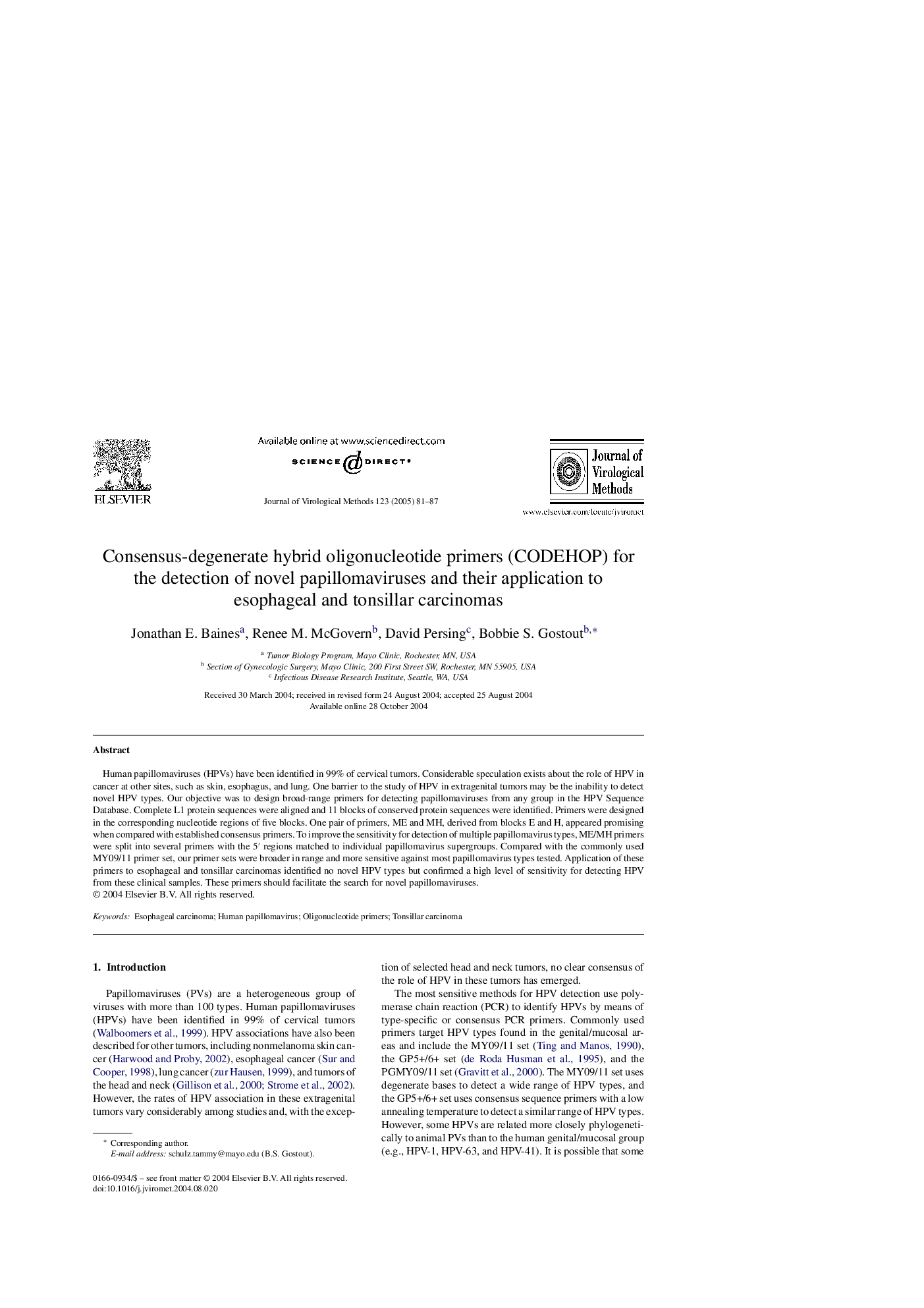| Article ID | Journal | Published Year | Pages | File Type |
|---|---|---|---|---|
| 9279649 | Journal of Virological Methods | 2005 | 7 Pages |
Abstract
Human papillomaviruses (HPVs) have been identified in 99% of cervical tumors. Considerable speculation exists about the role of HPV in cancer at other sites, such as skin, esophagus, and lung. One barrier to the study of HPV in extragenital tumors may be the inability to detect novel HPV types. Our objective was to design broad-range primers for detecting papillomaviruses from any group in the HPV Sequence Database. Complete L1 protein sequences were aligned and 11 blocks of conserved protein sequences were identified. Primers were designed in the corresponding nucleotide regions of five blocks. One pair of primers, ME and MH, derived from blocks E and H, appeared promising when compared with established consensus primers. To improve the sensitivity for detection of multiple papillomavirus types, ME/MH primers were split into several primers with the 5â² regions matched to individual papillomavirus supergroups. Compared with the commonly used MY09/11 primer set, our primer sets were broader in range and more sensitive against most papillomavirus types tested. Application of these primers to esophageal and tonsillar carcinomas identified no novel HPV types but confirmed a high level of sensitivity for detecting HPV from these clinical samples. These primers should facilitate the search for novel papillomaviruses.
Related Topics
Life Sciences
Immunology and Microbiology
Virology
Authors
Jonathan E. Baines, Renee M. McGovern, David Persing, Bobbie S. Gostout,
